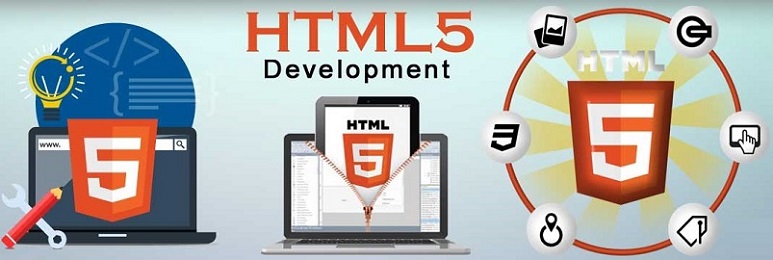Index Surge: Amplifying Your Insights
Stay updated with the latest trends and news across various industries.
HTML5 Development: Where Creativity Meets Code
Unlock your creative potential with HTML5 development! Discover tips and tricks to blend creativity and code for stunning web experiences.
10 Essential HTML5 Features Every Developer Should Know
HTML5 has transformed the web development landscape by introducing a plethora of features that enhance the user experience and improve web application functionality. Among these features, semantics stands out, providing a more meaningful way to structure content. With elements like <article>, <section>, and <nav>, developers can create well-organized pages that are easier for both users and search engines to understand. Moreover, audio and video embedding has become seamless thanks to the <audio> and <video> tags, which eliminate the need for third-party plugins. For further information about HTML5 semantic elements, check out the MDN Web Docs.
Another significant feature of HTML5 is its support for local storage. This allows web applications to store data on a user's device without the need for cookies, thus improving performance and user experience. Additionally, the canvas element permits developers to draw graphics and animations directly within the browser, making it an exceptional tool for dynamic data visualization. Furthermore, the introduction of the geolocation API has enabled websites to access a user's location, enhancing the functionality of location-based services. For a deeper dive into Canvas graphics, visit W3Schools.

How to Use HTML5 for Interactive Web Experiences
HTML5 has transformed the way we create interactive web experiences. By introducing new semantic elements and APIs, HTML5 allows developers to enhance user engagement and interactivity without relying heavily on external plugins. Features like Canvas for graphics, WebSockets for real-time communication, and the Geolocation API for location-based services empower developers to build immersive applications. To leverage these capabilities, start by familiarizing yourself with the new semantic elements such as <header>, <footer>, and <article>, which provide clarity and structure to your web pages, enhancing both usability and SEO.
Additionally, utilizing HTML5 forms can significantly improve the user experience. With features like input types for email, date, and range, you can create more intuitive forms that guide users through submission. Consider incorporating HTML5 form elements to validate input data easily and to provide instant feedback. For a richer interactive experience, combine HTML5 with JavaScript frameworks like React or Vue.js to create dynamic content that responds to user actions in real-time. This integration ensures your website not only meets modern standards but also provides visitors with a satisfying and engaging browsing experience.
What Makes HTML5 a Game Changer for Web Development?
HTML5 has transformed the landscape of web development by introducing a multitude of new features and functionalities that empower developers to create more engaging and dynamic web applications. One of the most significant advancements is the enhanced multimedia support, which allows developers to seamlessly integrate audio and video elements without needing external plugins. This native support improves user experience, as visitors can easily access rich media content, leading to longer site engagement and lower bounce rates.
In addition to multimedia enhancements, HTML5 also brings about improved semantics and structure, making it easier for search engines to index and understand web content. With the introduction of new semantic tags like <article>, <section>, and <nav>, developers can better organize their code, resulting in a cleaner structure and improved SEO benefits. This focus on structure not only aids in search engine optimization but also enhances accessibility for users with disabilities, making web content more inclusive.